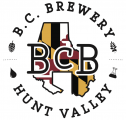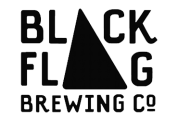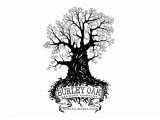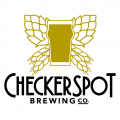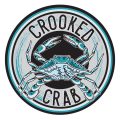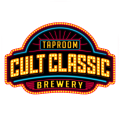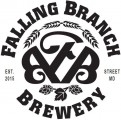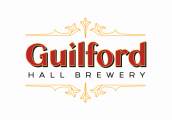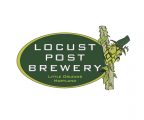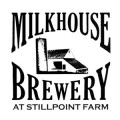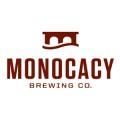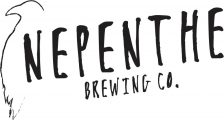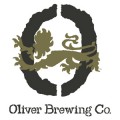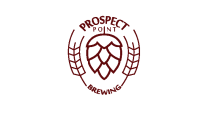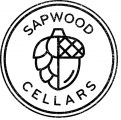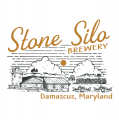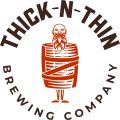
The Monocacy Hop is at Home in Maryland
Discovering the Viability and Benefits of the Genetically Unique Monocacy Hop for Local Brewing
The Monocacy hop is a member of a wonderful and important plant. The humble and noble hop, Humulus lupulus, is an herbaceous climbing plant used in the brewing process. Hops are known as the bittering agent in beer, a natural ingredient that lends balance to the sweet characteristics of malts and wort. Hops were not the first or only plant used in brewing. However, aside from providing bitterness to a finished beer, hops popularity as a brewing ingredient grew due to their notable aromatic and preservative properties.
The use of hops as a brewing ingredient dates to the 8th Century when King Pepin reportedly donated the fragrant plant to a Parisian monastery. Nearly a century later, in 859 CE, a German monastery recorded the first cultivation of the hop as a brewing ingredient. During the colonial ages, European brewers increased hops usage to preserve their beer for sea export. Throughout this era, escalating hop attributes in these recipes result in unique beer styles like European-Style Export beers and the foundation of many modern pale ales, the English India Pale Ale.
Brewers rely on hops in the vast majority of their recipes. Modern hops are selected and cultivated for a variety of traits and are often categorized in the trade based on the hop’s bittering potential (alpha acid content) and its use in adding aromatic properties to an ale or lager. Data from 2019 indicates that 40% of the world’s hops are grown in the United States, making the U.S. the world’s leader in hops cultivation. While hops followed European settlers to New England, brewing and hops cultivation followed the gold rush and ended up being cultivated in the Western U.S. by 1850. Today, more than 99% of American hops cultivation takes place in the Pacific Northwest (Idaho, Oregon, and Washington).
The Monocacy Hop | A Brief History

The manor home located on the original site of the Carrollton Manor property. Photo via Wikipedia, undated.
In the late-1960s, veterinarian Dr. Ray Ediger discovered a hop plant growing on Green Spring Farm in Frederick County. The property is part of the original Carrollton Manor, once belonging to Charles Carroll, a signer of the Declaration of Independence. While no record of the hop plant’s age or origin was located, the property had been continuously farmed by the family of Dr. Ediger’s wife, Louise, since 1886. Following the death of Louise’s mother in 1992, the Edigers took over farming operations on the property.
In his new role as farmer and caretaker of Green Spring Farm, Dr. Ediger enjoyed the curious hop plant located on the farm. As a youth living in Oregon, Dr. Ediger handpicked hops on a local farm to earn extra money during the summers. Not realizing how rare it was to find hops growing on this Maryland farm, Dr. Ediger allowed the hop plant to grow along a fence to provide summer shade to his chickens.
Year after year, the hop plant continued to grow. The plant would produce lovely cones each year and required very little active management. Stunningly, the plant seemed to withstand pressures from insects and disease. Dr. Ediger and Louise were able to enjoy this lush hop plant each year without providing notable management or harvesting its cones.
Starting in 2017, the University of Maryland Extension began researching the hop. Following the 2022 harvest of the hop in Western Maryland, Milkhouse Brewery at Stillpoint Farm brewed three beers featuring the hop for its FeBREWary 2023 celebration. Ongoing research at the University of Maryland Extension Western Maryland Research and Education Center in Keedeysville has proven that this genetically unique hop, Monocacy, has a promising future in Maryland’s brewing industry. Read the rest of this article to learn more about the Monocacy hop and the research behind it!
Hopping To It
At a 2013 Frederick County Farm Bureau event, Dr. Ediger met Tom Barse, co-founder and co-owner of Milkhouse Brewery at Stillpoint Farm in Mt. Airy. Tom expressed his interest in utilizing local ingredients to craft beer recipes on his local farm, prompting Dr. Ediger to give Tom some hop cones from the plant located on his own property – all in exchange for a beer!

An undated photo of Dr. Ray Ediger (L) and Tom Barse (R) standing with the Monocacy hop plant that was found on Green Spring Farm. Photo courtesy of the University of Maryland Extension.
After brewing a few batches with the local hop, Barse felt that the hop lent great spice, floral and fruity notes to several of the beers at Milkhouse Brewery at Stillpoint Farm. Barse shared his findings with a few local home brewers who brewed several small-batch recipes using the local hop cones in combination with other, readily available hop pellets.
In the wake of these experimental brews, Barse visited Green Spring Farm to dig some rhizomes. Barse and interested home brewers attempted to propagate the hop with limited success. Despite showing some promise, these attempts determined that young rhizomes require a level of management and care limited to the scope of a commercial producer. Barse reached out to contacts at the University of Maryland, his alma mater, and began working with Bryan Butler, Principle Agent in Agriculture and Natural Resources with the Univeristy of Maryland Extension.
Cultivating Research
In 2017, Butler propagated the Green Spring Farm hop using indoor, two-node vegetative propagation from new bine growth. Bines that grew vigorously were cut to two nodes and four leaves with the lower two leaves removed and one of the upper leaves removed before being potted. The plants were hardened off by moving the potted specimens outside to a shady area. Here, they received about two hours of full sun per day and were transplanted to a field after two weeks. This method of propagation was far more successful than previous attempts to grow the plant from rhizomes.
These hop plants were established in an existing Maryland hop trial in 2018 where they were planted with 23 other varieties at the University of Maryland’s Western Maryland Research and Education Center in Keedysville. Following damage caused by severe storms in 2020, Barse and Butler partnered with Grow & Fortify to secure grant funding and expand the research opportunities into this hop. Nearly 200 examples of the hop plants propagated from Green Spring Farm were relocated to a new yard at WMREC in late-2021 for the 2022 growing season.
A Genetically Unique Hop
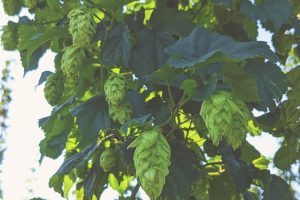
Monocacy hops growing on the plant at the University of Maryland Extension Western Maryland Research and Education Center in Keedeysville, Md.
Noting the plant’s characteristic vigor, visually unique architecture and pressure resistance, Butler submitted an example to the United States Department of Agriculture-Agricultural Research Service National Plant Germplasm System in Corvallis, Oregon for evaluation. Researcher Dr. Nahla Bassil, a plant molecular geneticist with the USDA-ARS Plant Germplasm System, compared the Green Spring Farm hop example to more than 600 genotypes representing a majority of the USDA’s national hop collection, USDA-ARS breeding examples and additional examples from the University of Nebraska. This comparison determined that the hop sample submitted by Butler was “unlike all other genotypes in the comparison, was unrelated to the included cultivars and was most similar to wild American accessions.”
As a result of this investigation, Butler learned that this is a hop variety bearing a genetically unique molecular fingerprint. Dr. Ray Ediger, Tom Barse and Bryan Butler chose to name the plant from Green Spring Farm “Monocacy” because the plant was located near the Monocacy River Watershed and each of the parties owns a farm in the watershed.
Brewing With The Monocacy Hop
The Monocacy hop has a chemical composition that is unlike many other varieties. The acid and oil contents of the hop make this variety stand out as a brewing ingredient. Evaluation of the hop’s composition indicates that the Monocacy hop has a 0.56 alpha acid to beta acid ratio. While this ratio is not problematic during the brewing process or in a finished beer, it is unusual to have a ratio that isn’t closer to 2:1 alpha acids to beta acids. The expectation is that this hop will contribute to a low-bitterness beer with a wonderful hop aroma.
While not yet widely adopted, the Monocacy hop has been used in a limited capacity in the brewing process. Several enthusiasts and the team at Milkhouse Brewery at Stillpoint Farm have explored the hop’s use in beer recipes.
In 2020, Milkhouse Brewery at Stillpoint Farm brewed a half-barrel (15.5 gallons) batch of a single-hop recipe. This recipe utilized hand-picked Monocacy hops in all three phases of the brewing process – the hop was included in the boil for bitterness, introduced in the whirlpool for general flavor and used to “dry-hop” the aging beer and promote aroma. Evaluation of this beer determined that the release was medium-light in body with a biscuity malt and spicy hop aroma. Based on these tasting notes, it was decided that the hop’s qualities would benefit from additional experimentation in the brewhouse.
As part of FeBREWary 2023, Milkhouse Brewery at Stillpoint Farm teamed with the Brewers Association of Maryland and the UME to host a public tapping and release of three beers, each featuring the Monocacy Hop. The lineup of beers included an American Lager, Pale Ale and a Vienna Lager.
More Information
Research into the Monocacy hop is ongoing. Hop plants will continue to be propagated and evaluated at WMREC while the hop and its harvested cones and pellets will be made available to more commercial brewers in the coming years.
If you’re interested in reading more about the current findings of this research, please review the research fact sheet located here.
Grant Acknowledgement
This project was funded by USDA Specialty Crop Block Grant Program through the Maryland Department of Agriculture’s SCBGP Agreement Number 221501-01, and by the USDA-ARS Projects 2072-21000-049-000-D and 8042-21220-257-00-D.
Mention of trade names or commercial products in this publication is solely for the purpose of providing specific information and does not imply recommendation or endorsement by The University of Maryland or the U.S. Department of Agriculture.








